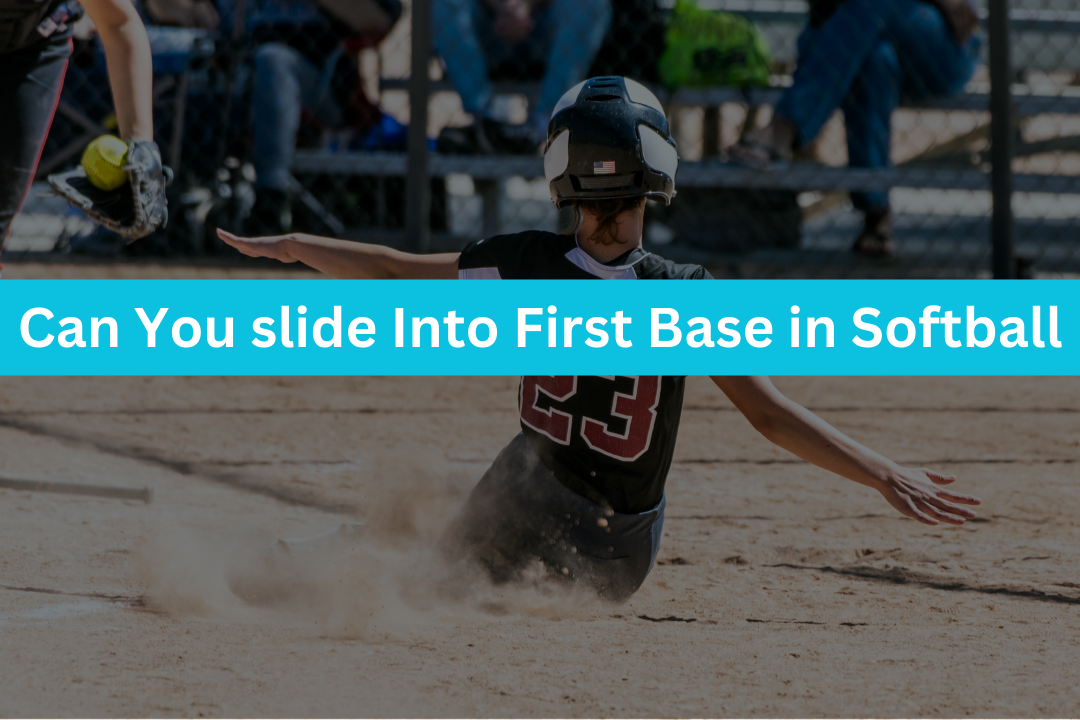
Softball is a popular game that is adored by millions of people around the world. When a player slides into first base, it is one of the most exciting events in softball. However, there is some debate about whether it is permissible to slip into first base or not. In this piece, we will examine the laws of softball regarding sliding into first base and address the point; can you slide into first base in softball? Furthermore, we must want to add here that ASA and USSSA itself are not stopping you from doing this.
So, let’s get a deeper dive into it and find out “if you can slide into first base in softball or not.
What is the concept of Sliding into First Base?
First, let’s clarify what it means to slide into first base. Sliding into first base is a strategy used by runners to approach the base as fast as feasible. In this, the runner dives toward home plate with one palm outstretched and tries to touch down before the ball arrives. This method is frequently used when the runner thinks that running regularly will not allow them to reach the base in time.
Can You Slide Into First Base in Softball?
If we talk about “can you slide into first base in softball” it does not have a simple yes or no response. However, Sliding into first base is permissible in softball, but certain conditions must be fulfilled. According to official softball regulations a runner may slide feet first or backward into first base as long as they do not impede the catcher receiving the pass at first base. Whereas if a runner slips into first base and interacts with a player making a play, they will be called out for interference. Furthermore, the runner makes contact with the base with some part of their body before being marked or the ball reaches the first baseman’s mitt.
Why Would You Slide into First Base in softball?
Well, Rolling into first base is a contentious tactic that isn’t always required. However, there are times when slipping into the first base is advantageous to the sprinter. Sliding into first base, for example, can improve the runner’s odds of reaching the base successfully if the ball is tossed off target or if the first fielder is not in a position to make the catch. Moreover, When there is tight play at the base, slipping into the first base can also be advantageous. Rolling can assist the runner in avoiding the tag and successfully reaching the base.
It may seem obvious to you, but one of the key reasons a player would choose to slide into first base is that they figure they have a better chance of effectively reaching the base than sprinting through it. This reasoning is completely comprehensible, as it becomes almost second nature in the moment’s intensity. After all, sliding is more effective at second and third base. It almost appears that the first should be the same as the second.
Following are the reasons, why prefer sliding into the first base:
- If the first baseman is tugged off the bag, sliding into the first base can help the runner escape a tag.
- This occurs as a result of a high toss (1B jumping up) or an object thrown too far left or right (pulling the 1B in that direction)
- This means that the 1B must finish a tag or return to the base for a force out.
- Sliding into first base can confound or disturb the umpire’s ability to make an accurate decision; but most often, this has no impact on the result, it can eventually turn out to become a runner.
- Nobody enjoys a spotless outfit.
A few Points for Why Not slide Into The First Base:
- It is usually slower to slip through the bag instead of sprinting through it.
- Use the fact that you can sprint through the first base, which is not permitted at the second or third base.
- Increasing the chance of harm.
Is it the quickest route to First Base?
Since we have talked about whether we can slide into first base in softball or not there comes another crucial component which is faster: sprinting through the base or sliding. When we compare it to second and third bases, the first base is distinct in that a runner is enabled to sprint past the tag at full speed. As a result, sliding tends to slow you down because your movement simply ceases. Running at maximum pace past first base enables the athlete to preserve their speed as they move forward. This is also true when sprinting managed to pass the home plate. Another way to think of this is by watching any running race.
Let us consider this, If sliding was a faster way to get somewhere, then why shouldn’t these runners try to slide into the finish line? There will certainly be some “leaning” in these events, but the athletes would then generally stay erect and at full pace as they reach the finish line.
Conclusion
Finally, sliding into first base is permissible in softball as long as the runner does not meddle with the defender and contacts the base before being tagged or the ball reaches the first baseman’s mitt. Although sliding into first base is a contentious tactic, it can be advantageous in certain circumstances. If you intend to slide into first base during a game, make sure you know the rules and practice the skill to prevent being called out for interference. Hopefully, this article helped you get a clear-cut idea about the tactic of sliding into first base in softball.

